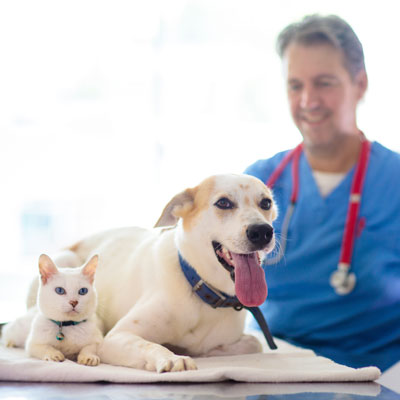Last Updated on 7 months by Dr Alisha Barnes

As a veterinary professional specializing in spinal health, I’ve observed the significant impact of degenerative disc disease (DDD) on our canine and feline patients. This condition can substantially affect a pet’s quality of life, often manifesting as pain and reduced mobility. In our practice, we employ evidence-based, non-invasive techniques to alleviate discomfort and promote spinal health. Through targeted adjustments and a holistic treatment plan, our goal is to enhance your pet’s well-being and facilitate an active, pain-free existence.
Understanding Degenerative Disc Disease in Pets
What is Degenerative Disc Disease?
Degenerative disc disease (DDD) is a progressive spinal condition commonly observed in canines and, less frequently, in felines. It primarily affects the intervertebral discs, which serve as crucial shock absorbers between the vertebrae. As these discs deteriorate, it can lead to a cascade of neurological and musculoskeletal complications.
Etiology of Degenerative Disc Disease
The pathogenesis of DDD in pets is multifactorial:
- Age-related degeneration: Natural wear and tear of the intervertebral discs over time.
- Breed predisposition: Chondrodystrophic breeds (characterized by short limbs and elongated bodies) exhibit a higher susceptibility.
- Obesity: Excess body weight exerts additional stress on the spinal column.
- Trauma: Acute injuries or chronic repetitive stress can accelerate disc degeneration.
It’s noteworthy that DDD has a higher prevalence in canines compared to felines, with small-breed dogs showing particular vulnerability. Epidemiological studies indicate that chondrodystrophic canine breeds have a 10-12-fold increased risk of developing intervertebral disc disease (IVDD) compared to non-chondrodystrophic breeds.
Clinical Presentation and Diagnostic Approach
Recognizing Clinical Signs
As veterinary professionals, we emphasize the importance of early detection. Pet owners should be vigilant for the following clinical signs:
- Reluctance to engage in physical activities such as jumping or climbing stairs
- Generalized stiffness or impaired mobility
- Vocalization upon palpation or movement
- Alterations in gait or posture
- Reduced activity levels
In advanced cases, pets may exhibit:
- Paresis or paralysis affecting one or more limbs
- Urinary or fecal incontinence
- Severe nociception manifesting as vocalization or aggressive behavior
Diagnostic Modalities
When DDD is suspected, a comprehensive diagnostic workup is essential. This typically includes:
1. Thorough physical and neurological examination
2. Advanced imaging studies:
- Radiography: To visualize spinal anatomy and detect disc space narrowing or calcification
- Magnetic Resonance Imaging (MRI): Provides high-resolution images of soft tissues, including the spinal cord and intervertebral discs
- Computed Tomography (CT): Offers cross-sectional imaging, particularly useful in detecting disc herniation
These diagnostic techniques are crucial for determining disc degeneration’s severity and precise location, which informs our treatment strategy.
Conservative Management Options for Degenerative Disc Disease
In veterinary medicine, we prioritize conservative management for mild to moderate cases of DDD and adjunctive therapy in more severe presentations.
Non-invasive Therapeutic Approaches
- Rest and activity modification: Implementing a period of restricted movement allows for the healing of inflamed disc tissue and mitigates the risk of further injury.
- Pharmacological management: Appropriate analgesics and anti-inflammatory medications may be prescribed to alleviate discomfort during the recovery phase.
- Thermotherapy and cryotherapy: Alternating application of heat and cold can help reduce inflammation and promote healing.
Physical Rehabilitation
Physical rehabilitation plays a pivotal role in managing DDD and improving patient mobility. Common modalities include:
- Passive range of motion exercises: Gentle manipulations to maintain joint flexibility
- Hydrotherapy: Low-impact aquatic exercises to build muscle strength
- Therapeutic massage: Techniques to enhance circulation and reduce muscle tension
Many veterinary facilities now offer specialized rehabilitation services tailored to patients with spinal conditions. These programs are customized based on individual patient needs and can significantly enhance quality of life.
Exercise Prescription and Assistive Devices
As patients recover, controlled exercise becomes integral to the treatment plan. This may include:
- Short, leash-controlled walks
- Supervised play sessions
- Aquatic therapy (under professional guidance)
For patients with persistent mobility deficits, assistive devices can be invaluable:
- Supportive harnesses with handles
- Canine wheelchairs for cases of hind limb paresis
- Non-slip floor coverings to provide traction
Nutraceutical Support
Appropriate nutritional supplementation can complement the management of DDD. Potentially beneficial supplements include:
- Glucosamine and chondroitin sulfate: To support joint health
- Omega-3 fatty acids: For their anti-inflammatory properties
- Antioxidants (e.g., Vitamins C and E): To promote tissue healing
It’s imperative to consult with a veterinarian before initiating any supplementation regimen, as these may interact with existing medications or may not be suitable for all patients.
Preventive Strategies for Degenerative Disc Disease
While complete prevention of DDD may not be feasible, several strategies can mitigate risk and slow disease progression.
Nutritional Management for Spinal Health
A balanced diet is fundamental for maintaining optimal body weight and providing essential nutrients for spinal health. Key nutritional considerations include:
- High-quality protein sources: Essential for tissue repair and maintenance
- Calcium and Vitamin D: Critical for skeletal health
- Antioxidant-rich foods: To combat oxidative stress and inflammation
Collaborate with your veterinarian to select an appropriate diet based on your pet’s age, breed, and health status.
Regular Physical Activity and Weight Management
Maintaining a healthy body weight is one of the most effective strategies for reducing DDD risk. Recommendations include:
- Daily exercise regimens tailored to the patient’s age and fitness level
- Careful portion control to achieve and maintain ideal body condition
- Regular weight monitoring to track progress
Routine Veterinary Evaluations
Regular veterinary check-ups are essential for early detection and management of DDD. These visits typically include:
- Comprehensive physical examinations
- Laboratory diagnostics to assess overall health status
- Discussions regarding the patient’s lifestyle and any observed changes
Early intervention is critical to effectively managing DDD and optimizing patient outcomes.
Clinical Case Studies
Illustrative Cases
The following case studies demonstrate the successful management of DDD through conservative approaches:
- Max, 7-year-old Dachshund: Diagnosed with early-stage DDD. Max has maintained mobility and quality of life through weight management, physical rehabilitation, and nutraceutical supplementation into his senior years.
- Luna, adult Labrador Retriever: Developed DDD secondary to trauma. Following a comprehensive rehabilitation program, including hydrotherapy and manual therapy, Luna regained full function of her hind limbs within 12 weeks.
- Whiskers, geriatric Persian cat: Presented with DDD, an uncommon presentation in felines. Whiskers maintained comfort and activity levels through a multimodal approach, including pain management and targeted exercise therapy.
Patient Testimonials
“Post-DDD diagnosis, we were concerned about Buddy’s prognosis. However, with a tailored treatment plan, he has resumed his normal activities, including his favorite game of fetch.” – Patricia, Buddy’s owner.
“The improvement in Bella’s mobility following her rehabilitation program was remarkable. Her quality of life has significantly improved.” – Mike, Bella’s caregiver.
These cases highlight the potential for positive outcomes with appropriate management of DDD. While each patient’s course is unique, many can maintain a good quality of life with proper veterinary care and treatment adherence.
It is crucial to seek veterinary attention if you suspect your pet may be affected by DDD or a spinal condition. Early intervention can significantly improve prognosis and long-term quality of life.
For expert care and advice on managing your pet’s spinal health, consider visiting Tails Animal Chiropractic Care. Consider consulting with a veterinarian specializing in spinal conditions to manage your pet’s spinal health. A team of experts can provide comprehensive, non-invasive treatments for pet spinal conditions, including degenerative disc disease, to help your companion achieve optimal health and well-being.
Frequently Asked Questions
Can overweight pets be more prone to degenerative disc disease?
Yes, excess weight can put additional strain on the spine, increasing the risk of DDD. Maintaining a healthy weight through diet and exercise is crucial for preventing spinal problems.
What is the prognosis for pets with degenerative disc disease?
The prognosis for pets with DDD varies depending on the severity of the condition, the pet’s overall health, and the effectiveness of treatment. Early diagnosis and appropriate management can significantly improve outcomes.
How long does it take for physical therapy to show results in pets with DDD?
The duration of physical therapy for DDD varies depending on the pet’s condition and response to treatment. Improvements may be gradual, and consistent therapy is essential for optimal results.
Are there specific breeds of dogs that are more susceptible to degenerative disc disease?
While any breed can develop DDD, certain breeds, such as Dachshunds, Beagles, and Bulldogs, may have a higher predisposition due to their spinal anatomy.
Can I prevent degenerative disc disease in my pet?
You can’t prevent DDD but can lower the risk. Keep a healthy weight, exercise regularly, avoid excessive jumping or trauma, and schedule routine vet check-ups.
